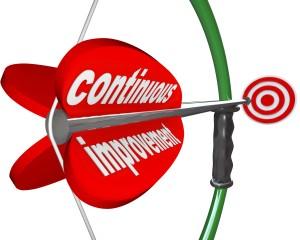Revealing the Secrets of Continuous Improvement: Methods for Long-Term Company Success

Lean, Six Sigma, and Kaizen are just three of the many approaches that companies use to implement continuous process improvement in order to infuse their improvement programs with structure and strategy. All process improvement projects are founded on continuous improvement, which generates essential business objectives such as decreased operational costs, more efficiency, and a better customer experience. This is true regardless of the methodology that you choose to implement. Taking a step back from more granular methodologies such as Lean or Lean Six Sigma, the following are five elements of continuous improvement that generate results that are in alignment with the objectives of your business:
Goal Alignment: The definition of progress shouldn't depend on who you ask. Achieving clear, well-defined, and generally accepted organizational objectives should motivate any necessary improvements. The ability to make sound judgments to forward the organization's goals depends on every employee having a clear understanding of the company's short- and long-term goals.
Empower Employees: The personnel who are responsible for executing those workflows and the owners of the process are the ones who have the most knowledge of the process. They must be included in the process of assisting process analysts in comprehending the issues that are associated with the process, and they should especially work together with process analysts to discover solutions to enhance the process.
Employee Training: As part of quality assurance, this is one of the crucial elements of continuous improvement to monitor personnel credentials and provide training as needed. As tasks become more complex, the necessary credentials may also evolve in order to maintain a high standard of quality. One way to keep track of training needs and create a program that supports increased quality is to document the qualifications needed to do each position.
Track Performance: Realizing the benefits and conveying them to your leadership and operations teams are the following steps as your methodology cascades throughout the organization. In order to determine if the anticipated benefits are feasible and can be achieved, it is essential to conduct a performance baseline at the beginning of the deployment and to conduct reviews at key milestones. Staff members to understand, they will have an easier time connecting the importance of their work to the achievement of goals if you lay out the desired future condition of your operations for them to understand.
Transparency: The continuous improvement strategy relies heavily on transparency for several reasons. Clear and consistent communication is key to the success of cross-functional teams. Improvement efforts should build upon previous achievements while learning from failures. Sharing the results of improvements increases engagement.
In Conclusion
The likelihood of effective, long-lasting transformation is enhanced by a concentration on improvement. With the help of the above-mentioned elements of continuous improvement, you can boost staff engagement, retention, service to customers, product quality, and the ability to attract new employees. To help you and your employees implement and understand every aspect of continuous improvement, join the programs offered by Group50 Consulting. Various companies, ranging from Fortune 50 to privately held startups, have implemented programs for continuous improvement through Group50®. Either assessing or refocusing and rejuvenating your current program can be a good starting point for your journey toward continual improvement.
Post Your Ad Here
Comments (1)
Random India12
Digital Marketer
Free Blog Submission Sites 2024
blognow.co.in
handyclassified.com
thenewsbrick.com
dailynewsupdate247.in